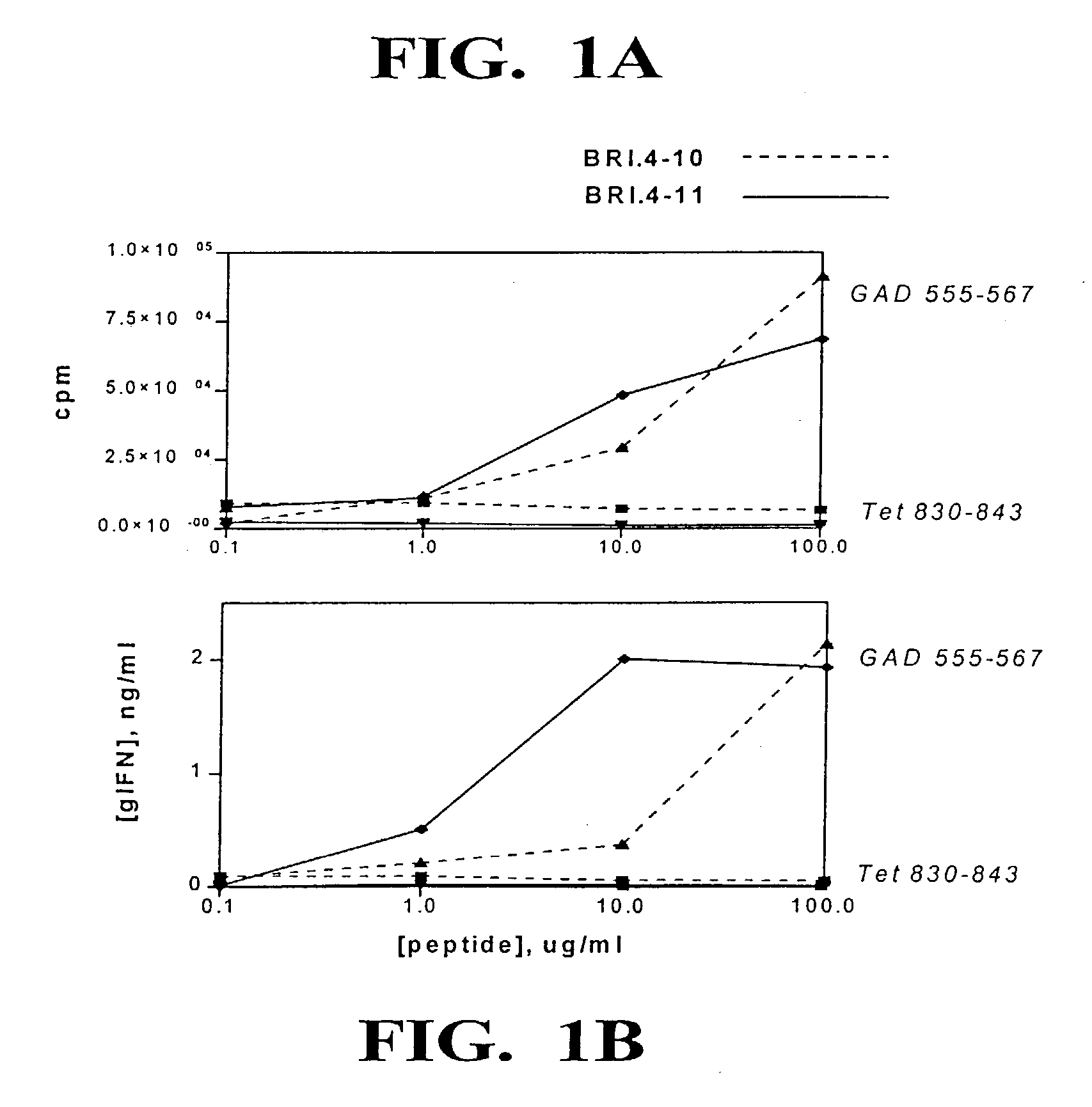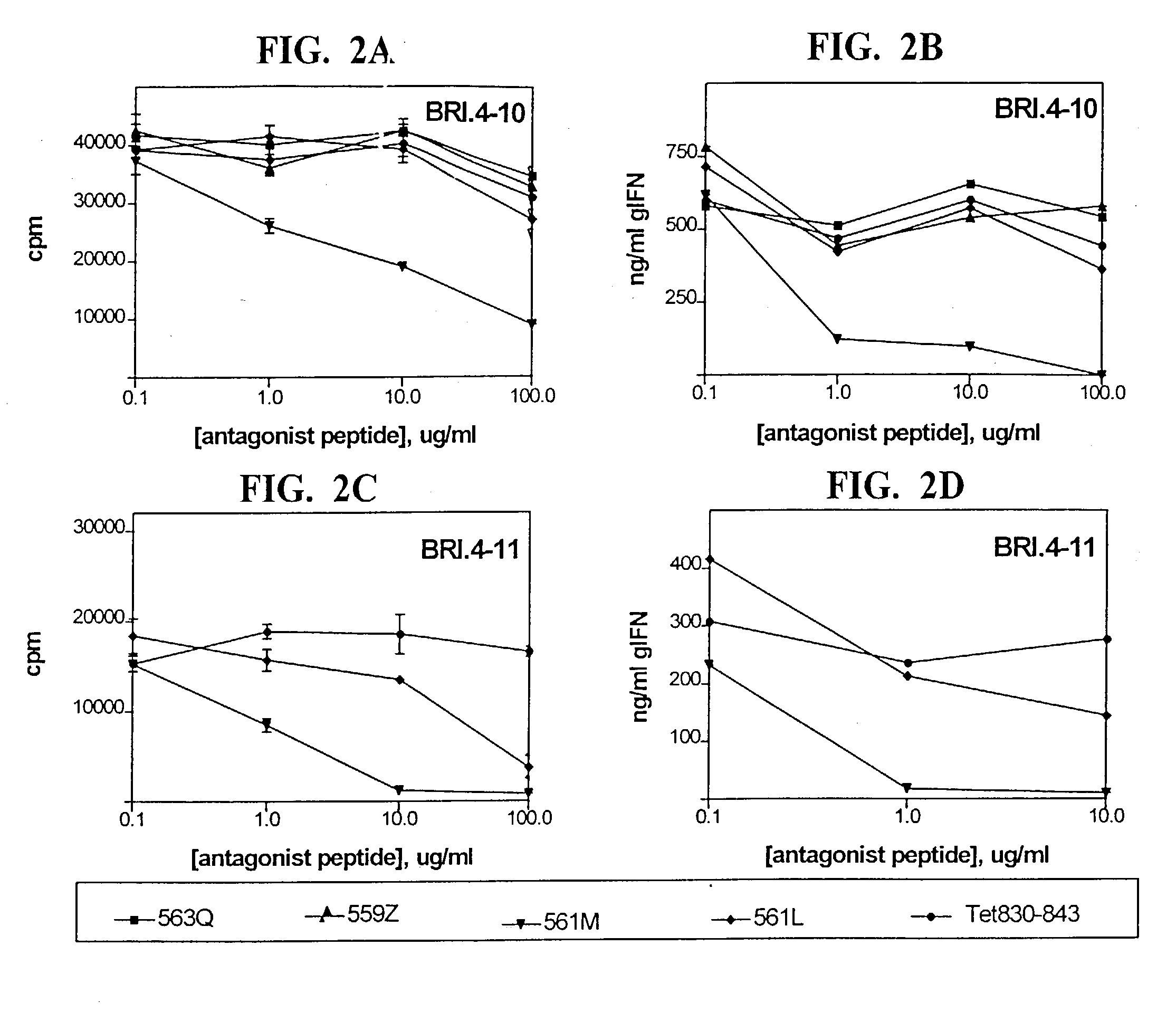Peptides and peptide analogues designed from a diabetes-associated autoantigen, and methods for their use in the treatment and prevention of diabetes
- Summary
- Abstract
- Description
- Claims
- Application Information
AI Technical Summary
Benefits of technology
Problems solved by technology
Method used
Image
Examples
Embodiment Construction
[0035] A large number of studies have suggested the possibility for rational design of peptide antagonists by altering amino acid residues at T cell receptor (TCR) contact sites within an immunogenic epitope, in order to subtly alter the overall avidity of the TCR-MHC-peptide interaction (Evavold et al, 1993, Immunol. Today 14:602; De Magistris et al, 1992, Cell 68:625). Mechanistically, this altered interaction appears to interfere with the duration of TCR signaling events and therefore interfere with the efficiency of substrate phosphorylation and subsequent intracellular signaling. In this invention, peptide antagonists for the GAD65 555-567 epitope were designed by single amino acid substitutions in a predicted TCR contact site. The altered peptide ligands continued to bind to DR4 molecules, but failed to activate epitope-specific autoimmune T cells. Treatment of DR4-expressing APC with both the GAD65 555-567 epitope and an antagonist peptide resulted in complete blockade of T c...
PUM
| Property | Measurement | Unit |
|---|---|---|
| Inhibition | aaaaa | aaaaa |
Abstract
Description
Claims
Application Information
 Login to View More
Login to View More - R&D
- Intellectual Property
- Life Sciences
- Materials
- Tech Scout
- Unparalleled Data Quality
- Higher Quality Content
- 60% Fewer Hallucinations
Browse by: Latest US Patents, China's latest patents, Technical Efficacy Thesaurus, Application Domain, Technology Topic, Popular Technical Reports.
© 2025 PatSnap. All rights reserved.Legal|Privacy policy|Modern Slavery Act Transparency Statement|Sitemap|About US| Contact US: help@patsnap.com


